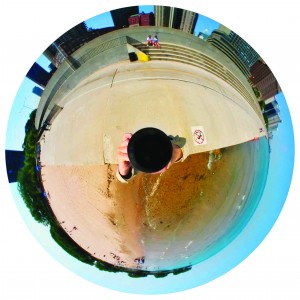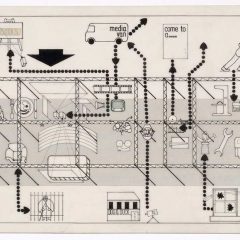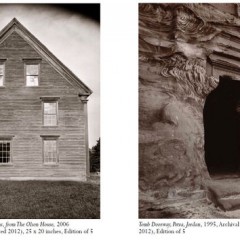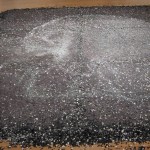Every two years, Montreal hosts Mois de la Photo, a citywide festival organized by a guest curator that showcases photographers from around the world. This year the exhibitions revolve around the theme of The Spaces of the Image, a topic articulated by this year’s guest curator, the French art historian and freelance curator Gaëlle Morel. The 11th edition of the event (in its 20th year) runs from Sept. 10 until Oct. 11 and showcases 24 solo shows from artists from 13 countries.
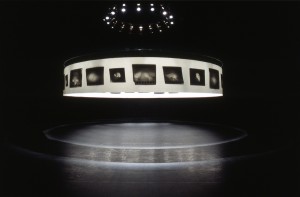
The Spaces of the Image speaks to the widening scope and challenge of the creation and display of photography. In the age of digital media, the production, traffic and presentation of images has become common currency and the relationship between photographer and viewer has morphed and mutated and become incredibly complex. The range of works within the Mois de la Photo exhibitions reveals this fact; artwork ranges from video to panorama to large-scale installations to sculpture to electronics to various other modes of presentation. All the while, each exhibit speaks of the condition of the image in today’s world.
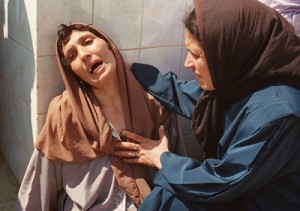
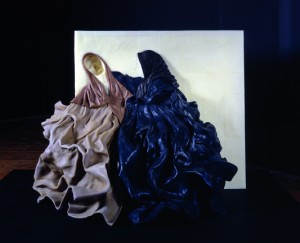
French artist Pascal Convert’s life-size wax sculpture Madone de Bentalha (2001-02) may not seem to be related to photography at first. Yet, the moving iconic object on view at Galerie de l’UQAM stems from a photo that spread across the world’s press following the tragic massacre of more than 200 people in the city of Bentalha, Algiers in September 1997. Whereas the photo could zip around the world instantly through the Internet and be published in newspapers anywhere on any continent, the medium of wax sculpture demands thorough and thoughtful manipulation. The result is sensuous, moving and profound. Thus, in his work, Convert communicates the power of the image without using photography at all. (The artist will actually be at Galerie de l’UQAM this Thursday).
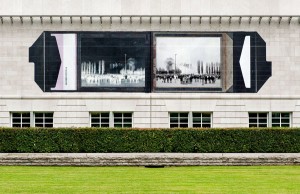
Canadian photographer Robert Burley’s Photographic Proof (2008-09) cannot be missed. The site-specific work features a monumental reproduction of a Polaroid photograph installed on the north façade of the Canadian Centre for Architecture (check out the video interview with the artist). The image depicts the destruction of a Kodak plant in December 2007 in the town of Chalon-sur-Saône in France, the birthplace of photography by the hands of Nicéphore Niépce. Burley manipulated the image to recreate a Polaroid, complete with its enclosure and make it larger than life with adhesive strips that were stuck to the building. While it speaks to the disappearance of a mode of production and a medium, the work shows Burley’s ingenious savvy in finding a new relationship to his viewer, a new relationship to his art. (Aside from the image on its façade, the CCA also features six of Burley’s photos of photography plants on display inside as part of the thoughtfully put together show The Disappearance of Darkness).
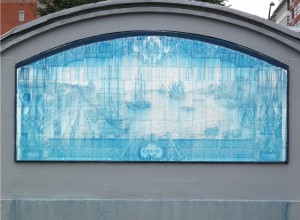
Dispersed around Montreal, the other exhibitions all play with the idea of the spaces of the image in interesting ways. Colombian photographer Oscar Muñoz’s Aliento [Breath] (1996-2002) invites the viewer to breathe on polished metal discs to reveal the portraits of victims of political violence. Montreal artist Shelley Miller created the nautical mural Cargo (The Wealth of Some and the Ruin of Others) (2009) out of sugar in the style of Portuguese tile work and documented its disintegration. Québec–based photographer Luc Courchesne’s panoramic circular images (taken with a Panoscope, a device invented by the artist) encourage viewers to engage with the disc-like photos and uncover a new way of seeing.
While spread around the city, the Mois de la Photo event quite thoughtfully stretches the boundaries of photography and explores the ever-evolving art of image making. The free-admission exhibitions and events culminate this Friday with a colloquium hosted by the Canadian Centre for Architecture, bringing together artists, curators, art historians and critics to discuss this year’s intellectually rich topic.
